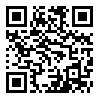Volume 11, Issue 3 (12-2024)
jhbmi 2024, 11(3): 244-256 |
Back to browse issues page
Download citation:
BibTeX | RIS | EndNote | Medlars | ProCite | Reference Manager | RefWorks
Send citation to:



BibTeX | RIS | EndNote | Medlars | ProCite | Reference Manager | RefWorks
Send citation to:
Shakibaeinia A, Chagin M, Golabpour A, Khosravi A. Providing a Foresight Model for Selecting the Appropriate Breast Cancer Diagnosis Model. jhbmi 2024; 11 (3) :244-256
URL: http://jhbmi.ir/article-1-887-en.html
URL: http://jhbmi.ir/article-1-887-en.html
Department of Computer Engineering, Dezful Branch, Islamic Azad University, Dezful, Iran
Abstract: (2967 Views)
Introduction: Selecting an appropriate model for breast cancer diagnosis is critical. Unsuitable models can compromise diagnostic accuracy, lead to incorrect outcomes, and impact clinical decision-making. In this context, foresight models are valuable tools for identifying and selecting the most effective diagnostic models. The objective of this study was to identify optimal models for breast cancer detection using foresight models.
Method: This study began by extracting articles related to artificial intelligence-based breast cancer diagnosis. The number of articles associated with each algorithm was determined, and algorithms referenced in fewer than 50 articles were excluded. Subsequently, annual publication trends were analyzed. A time series model based on artificial neural networks was developed to predict research trends over the next two years and to identify the algorithms expected to receive more research attention.
Results: After applying the exclusion criteria, a total of 2,308 articles were categorized into eight groups: deep learning, artificial neural networks, support vector machines, fuzzy logic, clustering, decision trees, Bayesian methods, and logistic regression. Additionally, eight time series models were constructed using data from the past seven years, predicting that deep learning and artificial neural networks will lead future research efforts in breast cancer diagnosis.
Conclusion: This study highlights the effectiveness of foresight as a methodological approach for selecting optimal techniques for breast cancer diagnosis. The results indicate that artificial neural networks and deep learning demonstrate superior performance and are likely to be pivotal methodologies for future research in this area.
Method: This study began by extracting articles related to artificial intelligence-based breast cancer diagnosis. The number of articles associated with each algorithm was determined, and algorithms referenced in fewer than 50 articles were excluded. Subsequently, annual publication trends were analyzed. A time series model based on artificial neural networks was developed to predict research trends over the next two years and to identify the algorithms expected to receive more research attention.
Results: After applying the exclusion criteria, a total of 2,308 articles were categorized into eight groups: deep learning, artificial neural networks, support vector machines, fuzzy logic, clustering, decision trees, Bayesian methods, and logistic regression. Additionally, eight time series models were constructed using data from the past seven years, predicting that deep learning and artificial neural networks will lead future research efforts in breast cancer diagnosis.
Conclusion: This study highlights the effectiveness of foresight as a methodological approach for selecting optimal techniques for breast cancer diagnosis. The results indicate that artificial neural networks and deep learning demonstrate superior performance and are likely to be pivotal methodologies for future research in this area.
Full-Text [PDF 2209 kb]
(1069 Downloads)
Research highlights
Research highlights
- Novel’s foresight approach identifies emerging trends and predicts trends in breast cancer diagnosis research.
- Key algorithms have been recognized to direct future diagnostic efforts effectively.
- Deep learning is expected to continue as the predominant method in breast cancer research.
- This research informs the application of AI tools to enhance the accuracy of breast cancer detection.
- The study highlights AI's importance in improving healthcare outcomes.
Type of Study: Original Article |
Subject:
Artificial Intelligence in Healthcare
Received: 2024/09/16 | Accepted: 2024/12/25
Received: 2024/09/16 | Accepted: 2024/12/25
Audio File [M4A 2490 KB] (91 Download)
Send email to the article author
| Rights and permissions | |
 |
This work is licensed under a Creative Commons Attribution-NonCommercial 4.0 International License. |





